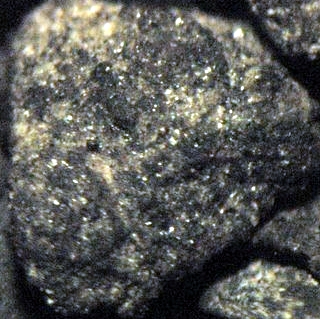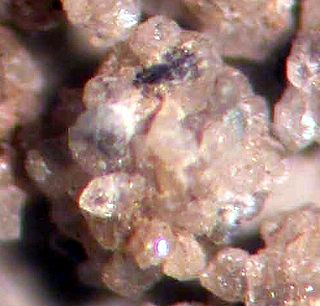
The Cadomin Formation is a stratigraphic unit of Early Cretaceous age in the western part of the Western Canada Sedimentary Basin. It is extends from southeastern British Columbia through western Alberta to northeastern British Columbia, and it contains significant reservoirs of natural gas in some areas. It was named after the mining town of Cadomin, which is an acronym of "Canadian Dominion Mining".
Gething Formation is a stratigraphic unit of Lower Cretaceous (Aptian) age in the Western Canada Sedimentary Basin. It is present in northeastern British Columbia and western Alberta, and includes economically important coal deposits.

The Montney Formation is a stratigraphical unit of Lower Triassic age in the Western Canadian Sedimentary Basin in British Columbia and Alberta.

The Fernie Formation is a stratigraphic unit of Jurassic age. It is present in the western part of the Western Canada Sedimentary Basin in western Alberta and northeastern British Columbia. It takes its name from the town of Fernie, British Columbia, and was first defined by W.W. Leach in 1914.
The Fort St. John Group is a stratigraphic unit of Lower Cretaceous age in the Western Canada Sedimentary Basin. It takes the name from the city of Fort St. John, British Columbia and was first defined by George Mercer Dawson in 1881.

The Spirit River Formation is a stratigraphical unit of middle Albian age in the Western Canadian Sedimentary Basin.

The Peace River Formation is a stratigraphical unit of middle Albian age in the Western Canadian Sedimentary Basin.

The Smoky Group is a stratigraphical unit of Late Cretaceous age in the Western Canadian Sedimentary Basin.

The Rundle Group is a stratigraphical unit of Mississippian age in the Western Canadian Sedimentary Basin.
The Belloy Formation is a stratigraphical unit of Permian age in the Western Canadian Sedimentary Basin.

The Dunvegan Formation is a stratigraphical unit of Cenomanian age in the Western Canadian Sedimentary Basin.
The Schooler Creek Group is a stratigraphic unit of Middle to Late Triassic age in the Western Canadian Sedimentary Basin. It is present in northeastern British Columbia. It was named for Schooler Creek, a left tributary of Williston Lake, and was first described in two oil wells northwest of Fort St. John, by F.H. McLearn in 1921. Exposures along Williston Lake serve as a type locality in outcrop.
The Baldonnel Formation is a stratigraphical unit of Carnian age in the Western Canadian Sedimentary Basin.

The Banff Formation is a stratigraphical unit of Devonian age in the Western Canadian Sedimentary Basin.
Colorado is a geologic name applied to certain rocks of Cretaceous age in the North America, particularly in the western Great Plains. This name was originally applied to classify a group of specific marine formations of shale and chalk known for their importance in Eastern Colorado. The surface outcrop of this group produces distinctive landforms bordering the Great Plains and it is a significant feature of the subsurface of the Denver Basin and the Western Canadian Sedimentary Basin. These formations record important sequences of the Western Interior Seaway, and as the geology of this seaway was studied, this name came to be used in states beyond Colorado, but was later replaced in several of these states with more localized names.
The Mannville Group is a stratigraphical unit of Cretaceous age in the Western Canadian Sedimentary Basin.
The Alberta Group is a stratigraphical unit of Cenomanian to early Campanian age in the Lewis overthrust in the Western Canadian Sedimentary Basin.

The Muskiki Formation is a stratigraphical unit of Late Cretaceous age in the Western Canadian Sedimentary Basin.
The Doig Formation is a geologic formation of middle Triassic age in the Western Canadian Sedimentary Basin. It takes the name from Doig River, a tributary of the Beatton River, and was first described in the Texaco N.F.A. Buick Creek No. 7 well by J.H. Armitage in 1962..
The Besa River Formation is a stratigraphical unit of Devonian age in the Western Canadian Sedimentary Basin.







